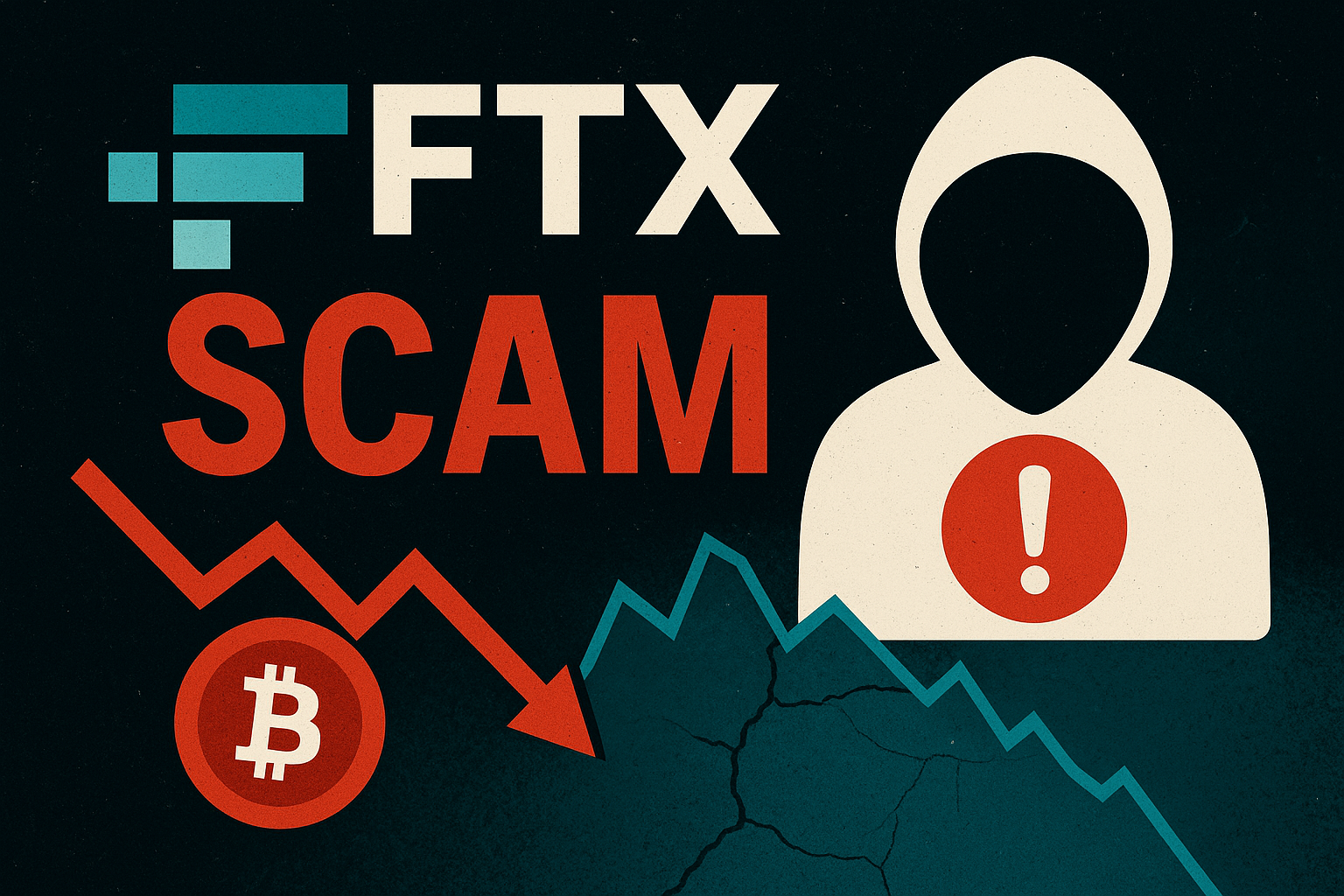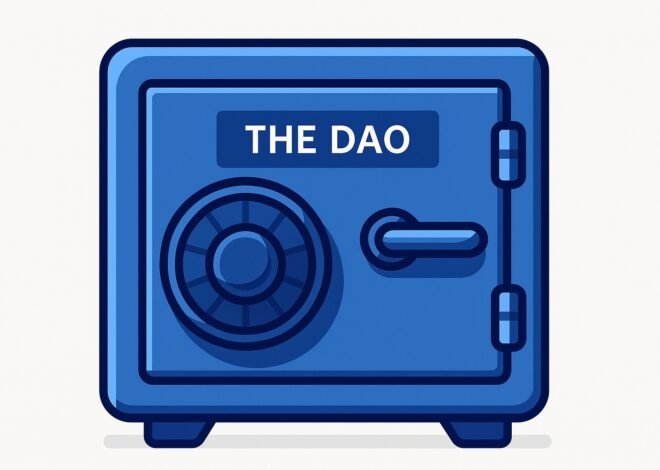
The FTX Scam: Unraveling the Collapse of a Crypto Giant
FTX was once celebrated as a top-tier cryptocurrency exchange, boasting rapid growth and a valuation that soared into the tens of billions. In November 2022, it imploded under the weight of alleged fraud, misappropriation of customer funds, and opaque financial practices. This article examines how FTX rose to prominence, the nature of the scam, the ensuing legal fallout, the wave of phishing attacks on creditors, and the ongoing efforts to reimburse victims.
The Rise and Fall of FTX – What was actually happened
FTX launched in 2019 under founder Sam Bankman-Fried and quickly attracted over $1.8 billion in equity investments. At its peak, the platform was valued at nearly $32 billion, propelling Bankman-Fried onto the Forbes billionaire list with an estimated personal net worth of around $22.5 billion.
In early November 2022, crypto news site CoinDesk revealed that Alameda Research—FTX’s affiliated hedge fund—held most of its assets in FTX’s native token (FTT), rather than in liquid, market-driven assets. The report triggered a rush of customer withdrawals, a liquidity crunch, and ultimately a Chapter 11 bankruptcy filing on November 11, 2022.
Fraudulent Practices at the Heart of the Scam
FTX’s collapse was driven by a series of alleged deceptive practices:
- Diversion of customer deposits to Alameda Research for proprietary trading and illiquid token holdings
- Preferential credit lines and exemptions from risk controls granted to Alameda
- Use of commingled funds to finance personal real estate purchases and political donations
- Creation of FTT tokens to bolster Alameda’s balance sheet with overvalued assets
According to the SEC, more than $8 billion in customer funds were funneled improperly, violating anti-fraud provisions of US securities laws.
Timeline of the Collapse
| Date | Event |
| Nov 2, 2022 | CoinDesk reports Alameda’s balance sheet is 80% FTT tokens |
| Nov 6, 2022 | Binance dumps 23 million FTT, sparking mass withdrawals |
| Nov 11, 2022 | FTX and 130 affiliates file for Chapter 11 bankruptcy |
| Dec 13, 2022 | SEC charges Sam Bankman-Fried with fraud and misusing funds |
| Nov 2023 | Jury convicts Bankman-Fried on all criminal counts |
| Mar 28, 2024 | Bankman-Fried sentenced to 25 years in prison |
Legal and Regulatory Fallout
On December 13, 2022, the Securities and Exchange Commission filed suit against Sam Bankman-Fried for orchestrating a “years-long fraud,” alleging that he concealed the diversion of customer funds, special treatment for Alameda, and exposure to overvalued tokens.
Following his extradition from The Bahamas, Bankman-Fried was convicted in November 2023 on multiple counts of fraud and conspiracy. In March 2024, he received a 25-year prison sentence and was ordered to repay over $11 billion to creditors and customers.
Phishing and Scam Warnings Post-Collapse
As FTX moved through bankruptcy, creditors became prime targets for cybercriminals. Key scams include:
- Phishing Emails: Impersonating FTX or Kroll to solicit KYC documents, wallet addresses, or login credentials
- Fake Claims Portals: Mirror sites with misspelled URLs designed to harvest passwords
- “Recovery Assistance” Offers: Third parties promising accelerated payouts for upfront fees
- Impersonation Calls: Fraudsters posing as FTX recovery specialists demanding immediate action
- Claim-Purchase Schemes: Offers to buy creditor claims at steep discounts, requiring a “verification deposit”
To guard against these threats, always verify communications through https://claims.ftx.com, enable two-factor authentication, and never share private keys or send cryptocurrency in response to unsolicited requests.
The Road to Recovery and Reimbursements
FTX’s reorganization plan estimates $11.2 billion owed to creditors, with between $14.5 billion and $16.3 billion in assets available for distribution. On July 23, 2025, the Delaware bankruptcy court approved the release of a $1.9 billion reserve, paving the way for the next record date of August 15, 2025 and anticipated payouts around September 30, 2025. Distributions will be handled by BitGo, Kraken, and Payoneer, and claimants must complete KYC verification and tax documentation to qualify6.
Lessons Learned from FTX Scam and Future Safeguards
The FTX scandal underscores the critical need for:
- Transparent corporate governance and strict segregation of client assets
- Robust regulatory oversight of crypto platforms akin to traditional financial institutions
- Investor due diligence, avoiding blind trust in high-profile endorsements
- Continuous cybersecurity vigilance to thwart post-bankruptcy phishing campaigns
As the digital-asset ecosystem matures, these safeguards will be essential to rebuild trust and protect investors against similar schemes in the future.
Staying informed and vigilant is your best defense in the ever-evolving crypto landscape. Remember to rely on official channels for updates and verification, and approach all investment opportunities with healthy skepticism.
What was the role of Almeda research in this scam?
Role of Alameda Research in the FTX Scam
Alameda Research was the crypto hedge fund founded by Sam Bankman-Fried and closely tied to FTX. Rather than operating as an independent trading firm, it served as the primary vehicle through which FTX customer funds were diverted and losses were concealed.
- Commingling of Customer Funds
- Alameda held deposits earmarked for FTX users in the same accounts it used for its own trades.
- There was no wall between client wallets and Alameda’s trading capital, enabling unauthorized loans.
- Preferential Credit and Risk Exemptions
- Alameda received billions in automatic credit lines on FTX without normal margin checks.
- FTT tokens were accepted as collateral at inflated valuations, even though they lacked sufficient liquidity.
- Creation and Use of FTT
- Alameda accumulated huge positions in FTX’s native token, FTT, to prop up its balance sheet.
- When questions arose about FTT’s true market value, Alameda’s overreliance on it triggered a liquidity panic.
- Proprietary Trading Losses
- Customer deposits that should have sat idle were used to fund risky, illiquid trades.
- As market conditions worsened, Alameda’s losses grew, ultimately rendering it unable to repay FTX or outside creditors.
By acting as both the largest counterparty and the primary beneficiary of FTX’s resources—while hiding losses through opaque accounting—Alameda Research was central to the fraud that brought down the entire exchange.
Can you explain how customer funds were misused?
How FTX Misused Customer Funds
FTX pooled all customer deposits in a single pool that lacked any legal or technical separation from Alameda Research. When withdrawals spiked, FTX used client assets to prop up Alameda’s ventures and cover its trading losses rather than fulfilling customer redemptions. This commingling allowed billions of dollars to move freely across wallets without oversight.
Primary Misuse Channels
- Commingling: Client deposits and Alameda’s proprietary capital shared the same wallets.
- Unauthorized Lending: Alameda drew on FTX’s pool through hidden credit lines, often with FTT as inflated collateral.
- Risky Proprietary Trades: Millions of dollars from client balances funded illiquid, high-risk positions.
- Personal and Political Expenditures: Funds financed Sam Bankman-Fried’s real estate acquisitions and political donations.
- Liquidity Backstops: Customer assets backstopped opaque investment bets and covered FTX’s own shortfalls.
FTX’s practices violated basic fiduciary responsibilities and breached the trust of every user, ultimately precipitating the platform’s collapse.
Read Also-
Types of Consensus Mechanisms – Lotus Crypoos
What are ZK Rollups? A Deep Dive into ZK Rollups


